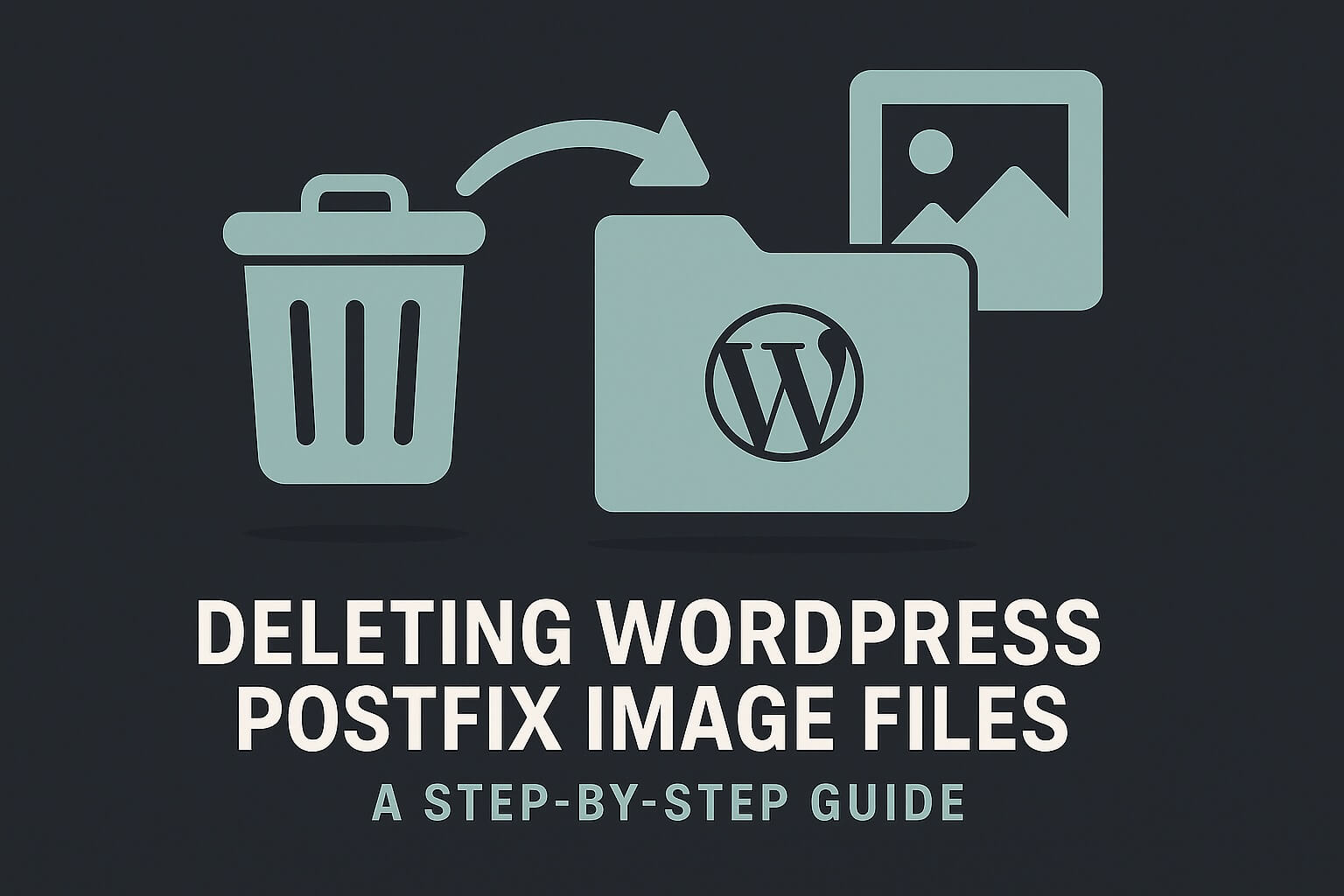If you manage a WordPress site, you’ve likely noticed that it generates multiple image sizes for uploaded files, appending postfixes like -300×300.jpg to filenames. These files can take up unnecessary space, especially if they’re not in use. This guide will show you how to delete these files while keeping the original images intact, using the find command in Linux.
What Are Postfix Files?
WordPress automatically creates resized versions of uploaded images, appending postfixes that indicate dimensions, such as -WidthxHeight. Examples:
- image-300×300.jpg
- photo-150×150.webp
The original files remain unaltered:
- image.jpg
- photo.webp
Objective
The goal is to delete all postfix image files (e.g., -300×300.jpg) while preserving the original versions.
⚠️ Important: Backup First!
Solution Using find
One-Liner Command
Replacing /path/to/your/directory with the path to your WordPress image directory:
find /path/to/your/directory -type f \( \
-name "*-[0-9]*x[0-9]*.jpg" \
-or -iname "*-[0-9]*x[0-9]*.jpeg" \
-or -iname "*-[0-9]*x[0-9]*.png" \
-or -iname "*-[0-9]*x[0-9]*.gif" \
-or -iname "*-[0-9]*x[0-9]*.webp" \
\) -deleteVerify Before Deletion
To check which files will be deleted without actually removing them, replace -delete with -print:
find /path/to/your/directory -type f \( \
-name "*-[0-9]*x[0-9]*.jpg" \
-or -iname "*-[0-9]*x[0-9]*.jpeg" \
-or -iname "*-[0-9]*x[0-9]*.png" \
-or -iname "*-[0-9]*x[0-9]*.gif" \
-or -iname "*-[0-9]*x[0-9]*.webp" \
\) -printConclusion
This simple script and approach help keep your WordPress directories clean by removing unnecessary image files generated by the system. Just remember to always back up your data before running deletion commands.



Leave a Reply
You must be logged in to post a comment.